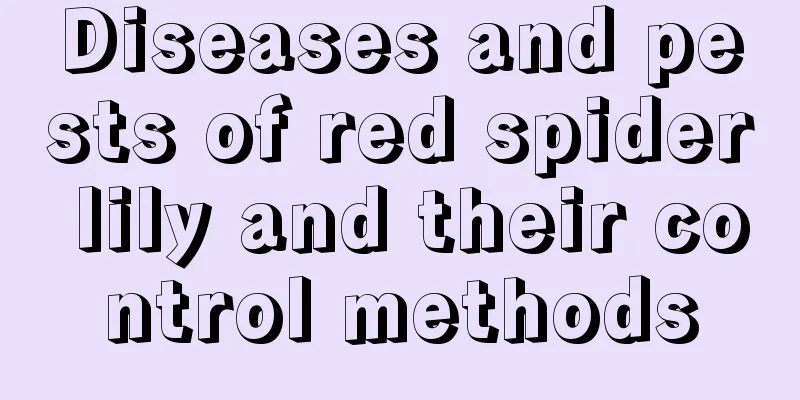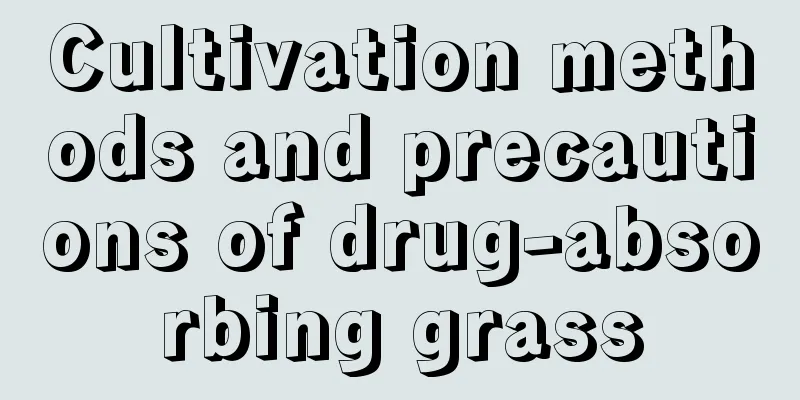Diseases and pests of red spider lily and their control methods

Diseases and prevention methods of red spider lilyBacterial soft rotThe pathogen is a weak parasite that mainly harms the tubers of the plant. The pathogen invades through the wounds on the surface of the red spider lily, and secretes protopectinase during the expansion process. The pectin in the intercellular layer between the mealybug host cells causes the plant's cells to decompose and water to seep out. The diseased part will then appear soft and rotten, and sometimes emit a foul odor. Prevention and treatment methodsBefore planting, soak the plants in 0.3% copper sulfate solution for 30 minutes, wash with water, and plant after drying. Spray 500 times diluted 50% carbendazim wettable powder every half a month for prevention and control. In the early stage of the disease, spray with 2500 times diluted 50% benomyl. Pests and control methods of red spider lilySpodoptera lituraThe disease is usually severe from late spring to November. The larvae will harm the leaves, buds and fruits of the plant. They will eat the leaf flesh and bore into the flower stalks and seeds, causing the plant to grow weak, gradually wither and die. Prevention and treatment methodsFor prevention and control, you can use 2500 times diluted 5% Reponsil suspension or 1000 times diluted Wanling. Lycoris radiataThe larvae will eat the inside of the bulb. When the damage is discovered, the leaves are often hollowed out, leaving a large amount of green or brown feces particles at the damaged area. Prevention and treatment methodsAlways observe the back of the leaves to see if there are neatly arranged insect eggs. Once found, remove them immediately. You can dig out overwintering insect eggs when turning the soil in early spring to reduce the occurrence of insect pests. When the disease occurs, spray 1500 times of the pesticide Lorsban or 800 times of chlorpyrifos emulsifiable concentrate. Choose to spray in the morning or evening when the larvae come out to move around, and the prevention and control effect will be better. GrubIt is a general term for the larvae of the superfamily Scarabaeoidea of the order Coleoptera. The larvae live in the soil all their lives and like to bite newly sown seeds, rhizomes, seedlings, etc., causing missing seedlings and broken ridges. They are extremely widely distributed and cause serious damage. Prevention and treatment methodsOnce discovered, pesticides such as chlorpyrifos or dichlorvos should be used for spraying and prevention in a timely manner. |
<<: Common pests of white clover and their control methods
>>: Epiphyllum diseases and pests and their control
Recommend
Can the water boiled with soybeans be used to water flowers directly? How to make soybean water for watering flowers
Boil soybean water to water the flowers directly ...
What is the best fertilizer for carnations?
Carnation fertilization time Carnations generally...
How to grow roses on the balcony? How to grow roses on the balcony?
It is good to plant roses on the balcony. General...
How to grow four-leafed lily
1. Maintenance methods 1. Temperature: It has a s...
How to propagate short-leaf Clivia
1. Division propagation 1. Time: It can be divide...
The efficacy and function of the thousand-year-old wood
Ornamental effect Of course, the first thing to t...
What is the best month to plant snake beans?
When to plant snake beans Snake beans are usually...
Watering method of white wax bonsai
1. Frequency The frequency of watering varies dep...
How to grow Phalaenopsis seedlings and precautions How to grow more Phalaenopsis seedlings
Phalaenopsis likes a cool environment, is afraid ...
How to grow apple mint well
1. Maintenance methods 1. Temperature: During its...
How to prune and top bitter melon and pruning methods
Bitter melon pruning time Bitter melon can be pru...
Squeeze the last 1㎡! By doing this, the space will immediately become 5 times larger, and you can grow 10 pots without feeling crowded!
The storage rack becomes a flower pot, and the sp...
Breeding methods and precautions for black rabbit ears
1. Maintenance methods 1. Temperature: It has str...
Lilies and daffodils...all their leaves fall off when it's hot. Move the pots here and they'll become blooming machines in seconds once the temperature drops!
How do dormant bulb flowers survive the summer? F...
The ten best flowers for the bedroom
1. Mint Mint is very suitable for being placed in...









